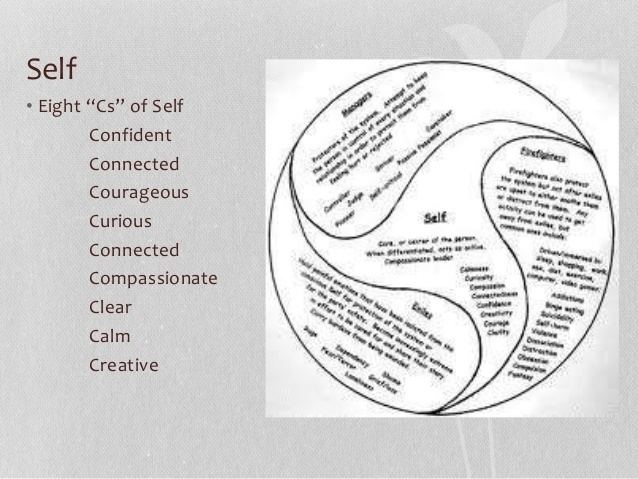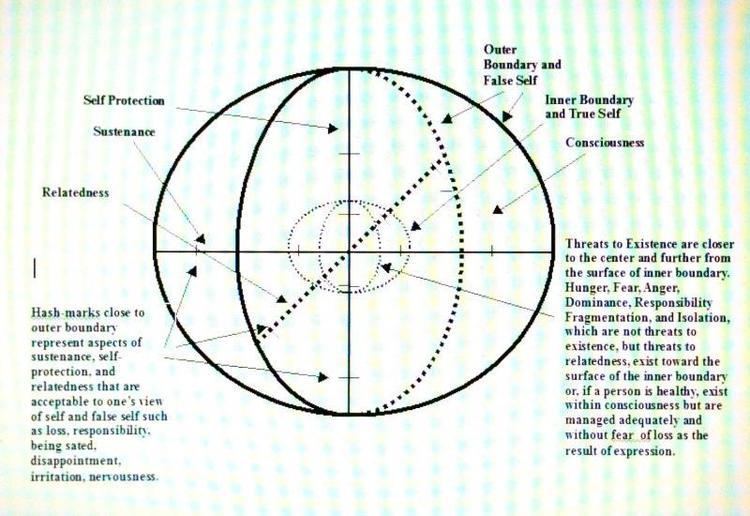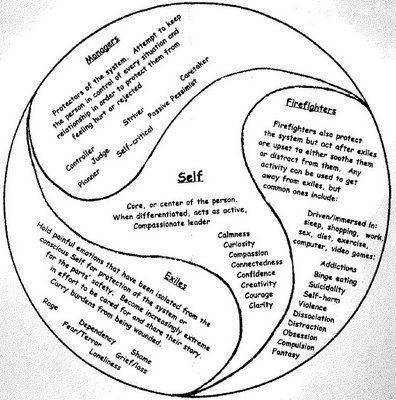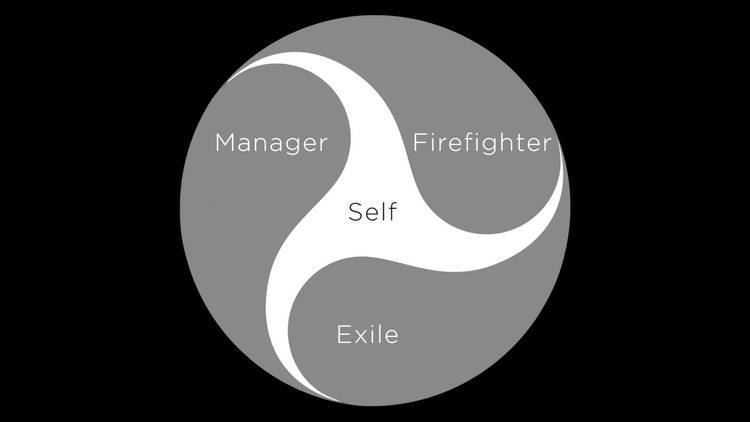 | ||
Similar Ego state therapy, Inner Relationship Focusing, Dissociation (psychology) | ||
Dick schwartz development of the internal family systems model
The Internal Family Systems Model (IFS) is an integrative approach to individual psychotherapy developed by Richard C. Schwartz. It combines systems thinking with the view that mind is made up of relatively discrete subpersonalities each with its own viewpoint and qualities. IFS uses family systems theory to understand how these collections of subpersonalities are organized.
Contents
- Dick schwartz development of the internal family systems model
- Parts
- Managers
- Exiles
- Firefighters
- Self
- The Internal System
- Protection
- Polarization
- Alliance
- IFS method
- Applications
- Trauma
- Couples therapy
- Self help and peer counseling
- Inner critic
- Training and certification of therapists
- References

Parts

IFS sees consciousness as composed of various "parts" or subpersonalities, each with its own perspective, interests, memories, and viewpoint. A core tenet of IFS is that every part has a positive intent for the person, even if its actions or effects are counterproductive or cause dysfunction. This means that there is never any reason to fight with, coerce, or try to eliminate a part; the IFS method promotes internal connection and harmony.

Parts can have either "extreme roles" or healthy roles. IFS focuses on parts in extreme roles because they are in need of transformation through therapy. IFS divides these parts into three types—managers, exiles, and firefighters.
Managers

Managers are parts with preemptive protective roles. They handle the way a person interacts with the external world to protect them from being hurt by others and try to prevent painful or traumatic feelings and experiences from flooding a person's awareness.
Exiles

Exiles are parts that are in pain, shame, fear, or trauma, usually from childhood. Managers and firefighters try to exile these parts from consciousness, to prevent this pain from coming to the surface.
Firefighters
Firefighters are parts that emerge when exiles break out and demand attention. These parts work to distract a person's attention from the hurt or shame experienced by the exile by leading them to engage in impulsive behaviors like overeating, drug use, violence, or having inappropriate sex. They can also distract from the pain by causing a person to focus excessively on more subtle activities such as overworking, over-medicating.
Self
IFS also sees people as being whole, underneath this collection of parts. Everyone has a true self or spiritual center, known as the Self to distinguish it from the parts. Even people whose experience is dominated by parts have access to this Self and its healing qualities of curiosity, connectedness, compassion, and calmness. IFS sees the therapist's job as helping the client to disentangle themselves from their parts and access the Self, which can then connect with each part and heal it, so that the parts can let go of their destructive roles and enter into a harmonious collaboration, led by the Self. IFS explicitly recognizes the spiritual nature of the Self, allowing the model to be helpful in spiritual development as well as psychological healing.
The Internal System
IFS focuses on the relationships between parts and between the Self. The goal of IFS is to have a cooperative and trusting relationship between the Self and each part. There are three primary types of relationships between parts:
Protection
Managers and firefighters protect exiles from harm and protect the person from the pain of exiles.
Polarization
Two parts are polarized when they are battling each other to determine how a person feels or behaves in a certain situation. Each part believes that it must act as it does in order to counter the extreme behavior of the other part. IFS has a method for working with polarized parts.
Alliance
Two parts may be allied with each other if they are working together to accomplish the same aim.
IFS method
IFS practitioners report a well-defined therapeutic method for individual therapy based on the following principles: (In this description, the term "protector" refers to either a manager or firefighter.)
The IFS method involves first helping the client to access Self. Then the Self gets to know a protector, discovers its positive intent, and develops a trusting relationship with it. With the protector's permission, the client accesses the exile(s) it is protecting and discovers the childhood incident or relationship that is the source of the burden(s) it is carrying. The exile is retrieved from being stuck in that past situation and helped to release its burdens. Then the protector can also let go of its protective role and assume a healthy one.
This method was first described in Schwartz (1995). Two additional books describe the IFS approach in some detail.
Applications
IFS proponents claim to have a "complete" form of individual therapy that is used for the full range of human development, from the healing of trauma to personal and spiritual growth. It has also been applied in the following areas:
Trauma
Richard Schwartz developed IFS while working with a population that had experienced considerable trauma, so IFS is thought to be very effective in this area and has evoked much interest among trauma therapists. In working with a traumatized exile, the client learns to reside in Self and witness the exile's traumatic memory without being flooded by it. In this way the memory is revisited and processed so it can be healed without the danger of retraumatization.
Couples therapy
IFS proponents claim to have successfully applied the method to couples therapy, investigating the interactions between the parts of the two people and how a part in one person can activate extreme parts in the other. The method incorporates short pieces of individual therapy in a couples session along with work on communicating from Self.
Self-help and peer counseling
Because the Self is the agent of transformation in IFS, it naturally lends itself to self-help. The IFS method has been taught in classes on self-therapy and peer counseling for the general public.
Inner critic
Jay Earley and Bonnie Weiss have applied IFS to working with the inner critic, showing how this difficult part is really an IFS protector that one can connect with and transform.
Healing Inner Conflict (HIC), a modality developed by David 'Bhakti' Gotlieb, corroborates the notion that the 'Inner Critic' has an intention to protect, usually from undesirable external responses—e.g. criticism, name calling, smacking—in an early childhood context or withdrawal of love/attention. Usually, there is a critical part that is an internalized authority figure that then overrides by intimidating the part that would like to express itself into paralyzed silence in order to avoid potential criticism from the external environment. HIC also concurs that by developing a healthy relationship with the critical part and meeting that part's needs (to not get criticized), transformation is able to happen. This transformation is usually the ability for the person in the present moment to express themselves freely where they weren't able to before, often due to childhood or later traumatic conditioning.
Training and certification of therapists
The Center for Self Leadership is the official IFS training organization started by Richard Schwartz. It offers three levels of training in IFS in many cities around the U.S. and some in Europe and Israel. In 2010 The Center for Self Leadership initiated a program of certification for IFS therapists.
